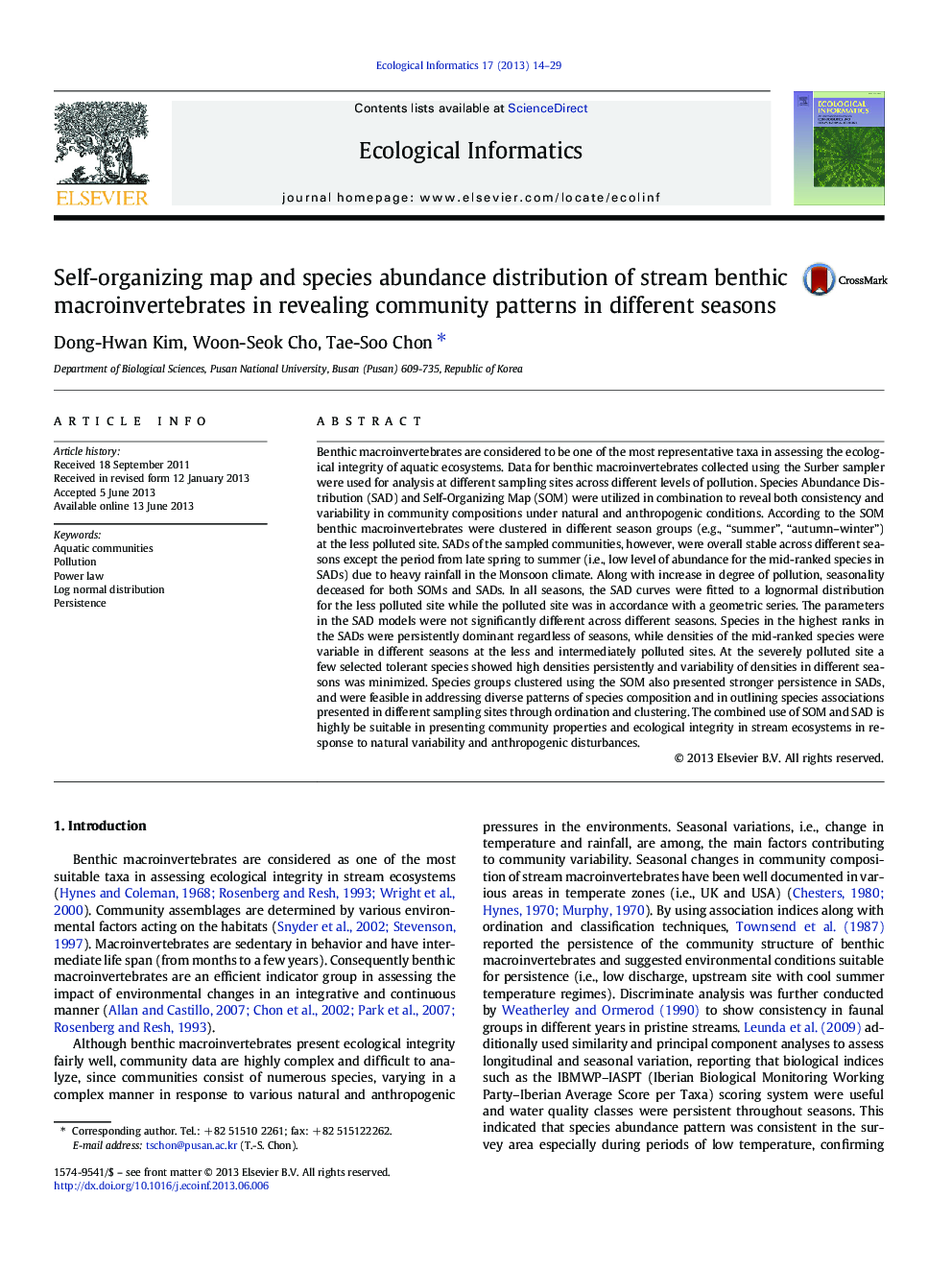| کد مقاله | کد نشریه | سال انتشار | مقاله انگلیسی | نسخه تمام متن |
|---|---|---|---|---|
| 4374960 | 1617215 | 2013 | 16 صفحه PDF | دانلود رایگان |

Benthic macroinvertebrates are considered to be one of the most representative taxa in assessing the ecological integrity of aquatic ecosystems. Data for benthic macroinvertebrates collected using the Surber sampler were used for analysis at different sampling sites across different levels of pollution. Species Abundance Distribution (SAD) and Self-Organizing Map (SOM) were utilized in combination to reveal both consistency and variability in community compositions under natural and anthropogenic conditions. According to the SOM benthic macroinvertebrates were clustered in different season groups (e.g., “summer”, “autumn–winter”) at the less polluted site. SADs of the sampled communities, however, were overall stable across different seasons except the period from late spring to summer (i.e., low level of abundance for the mid-ranked species in SADs) due to heavy rainfall in the Monsoon climate. Along with increase in degree of pollution, seasonality deceased for both SOMs and SADs. In all seasons, the SAD curves were fitted to a lognormal distribution for the less polluted site while the polluted site was in accordance with a geometric series. The parameters in the SAD models were not significantly different across different seasons. Species in the highest ranks in the SADs were persistently dominant regardless of seasons, while densities of the mid-ranked species were variable in different seasons at the less and intermediately polluted sites. At the severely polluted site a few selected tolerant species showed high densities persistently and variability of densities in different seasons was minimized. Species groups clustered using the SOM also presented stronger persistence in SADs, and were feasible in addressing diverse patterns of species composition and in outlining species associations presented in different sampling sites through ordination and clustering. The combined use of SOM and SAD is highly be suitable in presenting community properties and ecological integrity in stream ecosystems in response to natural variability and anthropogenic disturbances.
Journal: Ecological Informatics - Volume 17, September 2013, Pages 14–29